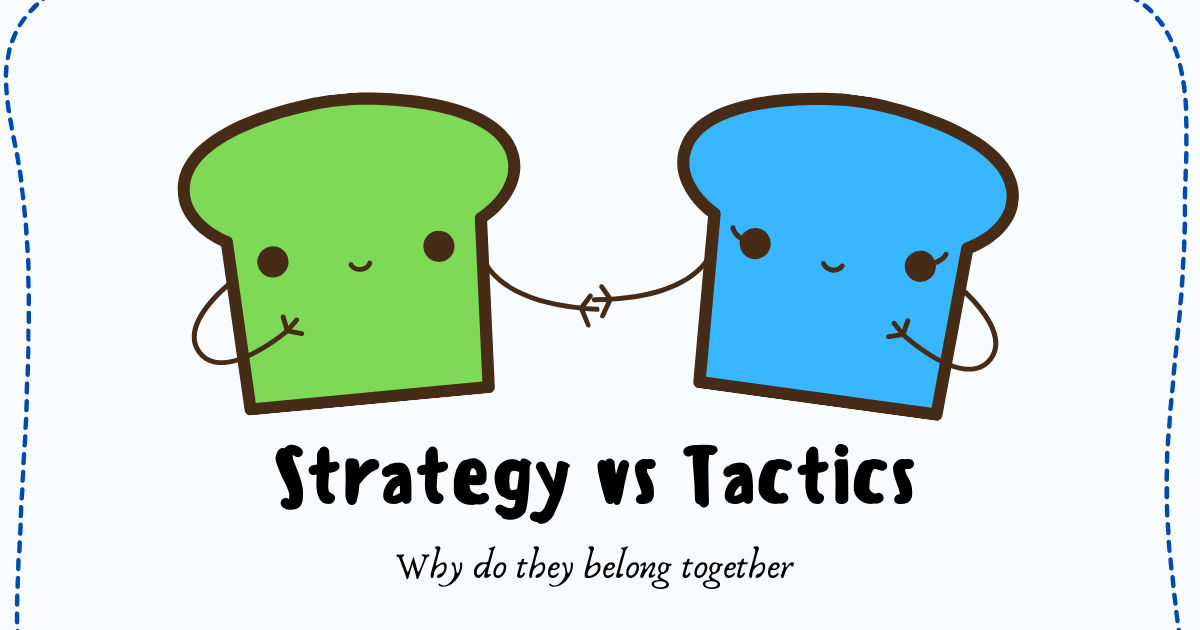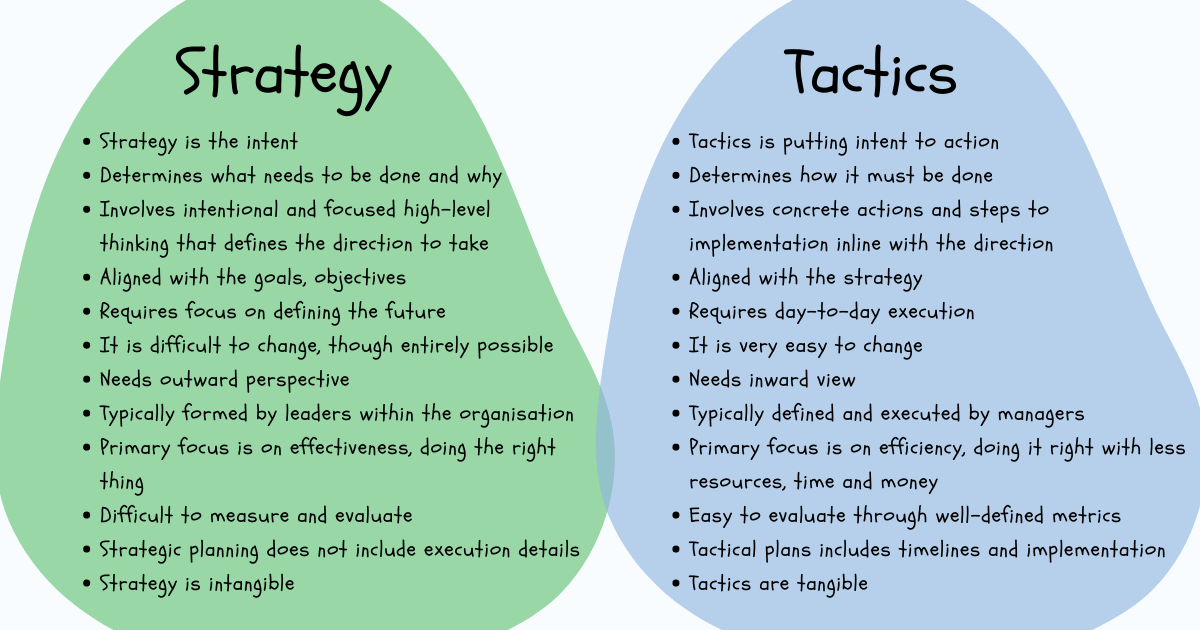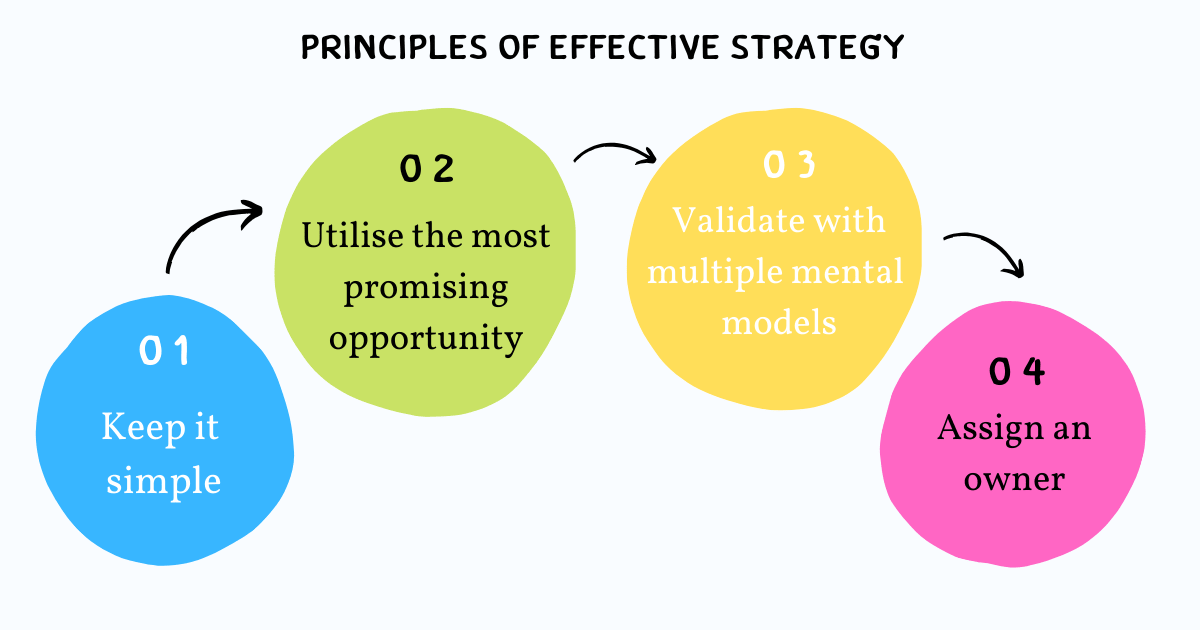Strategy vs Tactics: What You Need to Be Successful
Why do strategy and tactics belong together? Read on how you can use strategic thinking and tactical planning together to get your goals accomplished.
Join the DZone community and get the full member experience.
Join For FreeEffort spent in planning that does not originate from a specific strategy is keeping busy without clarity on what you are trying to accomplish. Similarly, a great strategy without a plan is just the intent without a means to generate the desired impact. It's thinking without action, direction without a path, and a desire to achieve goals without putting in the effort to achieve them.
Strategic planning requires the right balance of thinking ahead while actioning in the now. It's the perfect amalgamation of what the future holds to what must be done now in the present to make that future possible.
While strategy and tactics belong together in the planning process, they are very different in the value they provide. It's important to understand how the two co-relates while providing a unique value to the planning process.
Difference Between Strategy and Tactics: What and How of Strategic Planning
Strategy Defines the What and Why
- Strategy is the intent
- Determines what needs to be done and why by questioning its effectiveness
- Involves intentional and focused high-level thinking that defines the direction to take
- Aligned with the goals, objectives and the broad vision you want to achieve
- Requires focus on defining the future
- It is difficult to change, though entirely possible
- Needs outward, external looking perspective into the competition, market conditions
- Typically formed by leaders within the organization
- The primary focus is on effectiveness, doing the right thing
- Difficult to measure and evaluate
- Strategic planning does not include execution details
- Strategy is intangible
Peter Drucker explains this in his book, "The Effective Executive."
"The first practice is to ask what needs to be done. Note that the question is not "What do I want to do?" Asking what has to be done, and taking the question seriously, is crucial for managerial success. Failure to ask this question will render even the ablest executive ineffectual"
Tactics Define the How and When
- Tactics are putting intent to action
- Determines how it must be done by focusing on the efficiency (cost, effort, resources)
- Involves concrete actions and steps to implementation inline with the direction
- Aligned with the strategy
- Requires day-to-day execution directed towards a specific strategy
- It is very easy to change offering a lot of flexibility in determining steps to make the strategy successful
- Needs inward view that can be executed with the resources of the organization
- Typically defined and executed by managers
- The primary focus is on efficiency, doing it right with fewer resources, time and money
- Easy to evaluate through well-defined metrics
- Tactical plans include timelines and implementation details, when and where they will be applied
- Tactics are tangible
In his book, "The Effective Executive," Peter Drucker provides valuable questions for putting intent to action
"Converting a decision into action requires answering several distinct questions: Who has to know of this decision? What action has to be taken? Who is to take it? And what does the action have to be so that the people who have to do it can do it? The first and the last of these are too often overlooked-with dire results"
Now that we understand strategy and tactics better where strategy is the map to our goals while tactics are the specific paths in those maps, let us also learn what constitutes a good strategy.
4 Basic Principles of an Effective Strategy
To create an effective strategy, follow these 4 basic principles:
1. Keep it Simple
Simplicity implies being clear and precise in what you want to achieve, something that can be easily remembered and applied as a guiding principle every step of the way.
It must also be realistic and actionable within the context of the organization and must take resources and other factors into account.
By employing Occam's razor mental model you can develop simple strategies with fewer assumptions that can be easily validated.
2. Utilize the Most Promising Opportunity
Utilizing the right opportunity at the right time requires a solid understanding of the nuances of your business, establishing a competitive view with another firm or industry, and focused energy to make the right move while taking obstacles into account.
By reasoning from first principles, you can break down the goal into its fundamental building blocks, ask powerful questions, separate facts from assumptions, get down to the basic truth, and then construct a view from the grounds up. It's an excellent thinking practice to create a new strategy by looking into the future and its needs.
3. Validate With Multiple Mental Models
While it may be tempting to go for a strategy that has immediate short term positive benefits, it's much more beneficial to analyze its potential impact into the future and instead go for strategies that have long term gains even at the cost of short term pain.
Second-order thinking is a great mental model to get outside our comfort zone and make decisions with positive outcomes compounded into the future.
Another highly relevant thinking practice is to seek the opposite of what we desire by applying an inversion mental model. This form of reverse questioning can help us inquire about our assumptions, beliefs and in turn, gain a better perspective to find answers to our original question with greater clarity and understanding. For example, instead of thinking about how this strategy can be successful, dig deeper, and find answers into how it can fail.
Shane Parish talks about the effectiveness of mental models in his book The Great Mental Models
"There is no system that can prepare us for all risks. Factors of chance introduce a level of complexity that is not entirely predictable. But being able to draw on a repertoire of mental models can help us minimize risk by understanding the forces that are at play. Likely consequences don't have to be a mystery"
By recognizing failure patterns, you will be in a better position to devise a strategy that has the potential to generate the desired impact.
4. Assign an Owner
Putting strategy to action may feel like a large investment in resources in the short term, but once deployed it should lead to building strength within the organization.
The power of a good strategy comes from the belief in its goodness, collaborative mindset to execute it, and taking responsibility to own its outcome.
Without accountability, a strategy is just a dream that never gets materialized. With the rightful owner to rally the cause, this dream can become a reality.
Peter Drucker highlights the importance of an owner in The Effective Executive "No decision has been made unless carrying it out in specific steps has become someone's work assignment and responsibility. Until then, there are only good intentions"
What Happens When We Work Without Doing Strategic Planning
Teams that operate without a strategy may apply multiple tactics to achieve their goals, but in the end, they either fail or take a very long time to achieve their outcomes without clarity on what worked.
Not knowing the path to success prevents the team from learning, understanding patterns of failure, and devising better ways of doing things in the future.
By not investing in providing a good sense of direction to your team, you may keep pulling new tactics out without realizing that the ship needs to steer on a new course.
Lack of strategy also leads to ineffective operating models that do not align with the company's goals, results in short term thinking, leads to a higher propensity of being stuck with old models and old ways of thinking, and does not generate future value.
Without an understanding of what, an attempt to define how adds no value to the organization as it's unfiltered noise in an already chaotic scheme of things.
Strategic planning requires an effective strategy that sows the seed for an efficient execution plan. By knitting strategy and tactics together, you can achieve the right balance of effectiveness and efficiency which is crucial to the success of an organization.
3 Step Process to Shift Gears From Tactical Planning to Strategic Thinking
If you are looking to develop leadership qualities, then shift from executing strategies defined by others to create your strategies and change gears from acting tactically to thinking strategically.
It requires a mindset shift from doing to determining why you are doing what you doing and what more can be done to add value to your business.
Shane Parrish promotes thinking better in his book The Great Mental Models "Contrary to what we're led to believe, thinking better isn't about being a genius. It is about the processes we use to uncover the reality and the choices we make once we do"
Here's the 3 step process to enable this shift by growing your circle of competence:
1. Start Within Your Circle of Competence
The best place to start is to look within your circle of competence, areas where you have the most familiarity and experience.
Generate new insights by looking for top issues hidden below the surface. By going beyond the tip of the iceberg to what lies beneath, you will be able to uncover critical areas that will add value to your business and product.
Make tradeoffs for maximizing business potential and articulate a clear strategy by following the 4 principles of a good strategy outlined earlier.
By starting on the right note, you will gain the confidence to think beyond and enable trust with your manager.
2. Invest In Learning About Your Business and Industry
Thinking about the future requires an active dose of curiosity and knowledge. It requires self-awareness and acceptance of what you don't know to enable yourself to learn it with openness and curiosity.
Spend time with other functions within your organization to understand how they operate, what are their challenges and how do they make decisions. It will grow your circle of competence and enable you to think better by applying multiple mental models from different functions.
Make self-directed learning a part of your day by listening to podcasts, reading books, blogs, or any other medium that helps you gain better knowledge about your industry.
By investing in self-directed learning, you can take charge of developing your thinking process to think strategically.
3. Find People and Groups to Learn From
The best way to grow in your role is to find a mentor within or outside the organization who can help you think better by evaluating your thinking model, expose you to different lines of thinking and enable you to get outside your comfort zone and think outside the box.
Another effective way is to gain your manager's trust and be a listening party to strategic thinking groups within your organization. Hearing conflicts of opinions and divergent views from different people in the organization will expand your natural thinking process and enable you to look beyond your beliefs and assumptions.
Examples of Strategy and Tactics at Work
While we understand the difference between strategy and tactics, let us take a few examples of how they work together.
1. Goal is to increase employee engagement
Strategy
Unlike the popular belief that employees can be engaged by offering better incentive programs, multiple studies show that employee engagement comes from empowerment. So, an effective strategy could be to enable more empowerment at work.
Tactics
Some of the powerful tactics that can be employed to make this strategy successful includes:
- Allocate 20% time for innovation by letting employees do any work of their choice during this time
- Enable team members to take more responsibility by delegating all urgent and not important tasks
- Coach managers and leaders to enable their people to make independent decisions
- Help employees grow by choosing their mentor and invest in building a mentor-mentee relationship
2. The goal is to hire more right talent
Strategy
To hire the right talent, it's very important to focus on the process. A good strategy could be to develop a consistent and repeatable interview process that can scale with the company's growth.
Tactics
To develop an interview process that can be repeated consistently, the following tactics can be employed:
- Establish evaluation criteria by creating an interview template
- Establish ground principles and share it with the hiring team to align on interview guidelines
- Grow the interview panel by making the process more inclusive
- Take unbiased decision by involving a hiring committee
Strategy and tactics together enable organizations to think ahead while planning in the now. They are the two key pillars that determine how the company operates, makes decisions, and how its future looks like.
What do you think about strategic planning in your organization? Do you see both strategy and tactics being part of your organization's planning process?
This article was first published on techtello.com
Published at DZone with permission of Vinita Bansal. See the original article here.
Opinions expressed by DZone contributors are their own.





Comments